
Batanes: A Serene Island Escape in the Philippines
Discover Batanes, the Philippines' hidden gem, where stunning landscapes, rich culture, and serene beauty converge for an unforgettable island getaway.
Batanes is an archipelago province in the northernmost region of the Philippines. This remote haven is known for its stunning landscapes, from rolling hills and verdant pastures to dramatic cliffs plunging into the azure waters of the Pacific Ocean. The islands are a world away from the bustle of urban life, offering a tranquil retreat for those seeking peace and natural beauty. Batanes is made up of three main islands: Batan, Sabtang, and Itbayat. Each island has its own unique charm and attractions. Batan, the most accessible, is home to the capital town of Basco. Here, you can explore traditional Ivatan stone houses, visit the Basco Lighthouse for panoramic views, and enjoy a leisurely bike ride around the island. Sabtang is famous for its preserved historic villages and untouched beaches, while Itbayat boasts rugged terrain and a more adventurous spirit. The culture of Batanes is as captivating as its scenery. The Ivatan people are known for their resilience, hospitality, and distinctive way of life. Visitors can experience local traditions, sample unique Ivatan cuisine, and even participate in traditional fishing and farming activities. The islands' isolation has helped preserve their cultural heritage, making Batanes not just a feast for the eyes, but also a rich cultural experience. Whether you are hiking through the lush Vayang Rolling Hills, marveling at the stone houses of Savidug Village, or simply soaking in the serene beauty of the landscape, Batanes promises an unforgettable journey. Its pristine environment and warm-hearted locals make it a perfect destination for those looking to connect with nature and immerse themselves in a unique cultural setting.
Local tips in Batanes
- Pack light but prepare for varying weather conditions; Batanes can be windy and rainy.
- Cash is king; ATMs are scarce, so bring enough cash for your stay.
- Rent a bike or scooter to explore the islands at your own pace.
- Try the local delicacies like 'uvud' (banana trunk meatballs) and 'tatus' (coconut crab).
- Respect local customs and traditions; always ask for permission before taking photos of people or their homes.
- Book accommodations and tours in advance, especially during peak season.
Batanes: A Serene Island Escape in the Philippines
Batanes is an archipelago province in the northernmost region of the Philippines. This remote haven is known for its stunning landscapes, from rolling hills and verdant pastures to dramatic cliffs plunging into the azure waters of the Pacific Ocean. The islands are a world away from the bustle of urban life, offering a tranquil retreat for those seeking peace and natural beauty. Batanes is made up of three main islands: Batan, Sabtang, and Itbayat. Each island has its own unique charm and attractions. Batan, the most accessible, is home to the capital town of Basco. Here, you can explore traditional Ivatan stone houses, visit the Basco Lighthouse for panoramic views, and enjoy a leisurely bike ride around the island. Sabtang is famous for its preserved historic villages and untouched beaches, while Itbayat boasts rugged terrain and a more adventurous spirit. The culture of Batanes is as captivating as its scenery. The Ivatan people are known for their resilience, hospitality, and distinctive way of life. Visitors can experience local traditions, sample unique Ivatan cuisine, and even participate in traditional fishing and farming activities. The islands' isolation has helped preserve their cultural heritage, making Batanes not just a feast for the eyes, but also a rich cultural experience. Whether you are hiking through the lush Vayang Rolling Hills, marveling at the stone houses of Savidug Village, or simply soaking in the serene beauty of the landscape, Batanes promises an unforgettable journey. Its pristine environment and warm-hearted locals make it a perfect destination for those looking to connect with nature and immerse themselves in a unique cultural setting.
When is the best time to go to Batanes?
Iconic landmarks you can’t miss
Basco Lighthouse
Discover the stunning Basco Lighthouse in Batanes, a historical landmark offering breathtaking views and rich maritime heritage.

Basco Rolling Hills
Discover the enchanting Basco Rolling Hills in Batanes—where stunning landscapes and serene vistas await every traveler.
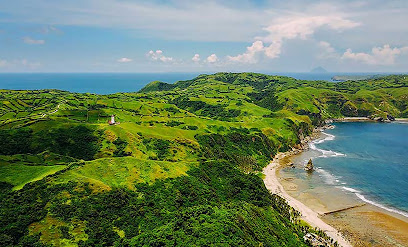
Fundacion Pacita
Explore the serene beauty of Fundacion Pacita, a resort hotel in Basco, Batanes, where nature meets comfort in a unique cultural experience.

Chawa View Deck
Discover the breathtaking beauty of Chawa View Deck, where stunning panoramas of Batanes' landscapes meet serene ocean views, perfect for every traveler.

Valugan Boulder Beach
Experience the breathtaking landscape of Valugan Boulder Beach, where massive boulders meet the serene waves of the Pacific in beautiful Batanes.
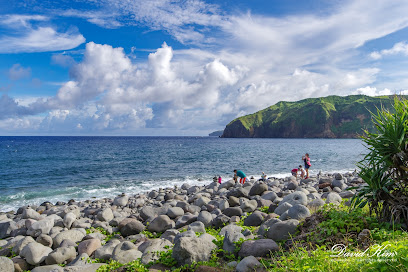
House of Dakay
Experience Batanes' cultural richness at the House of Dakay - a stunning testament to Ivatan architecture and heritage.
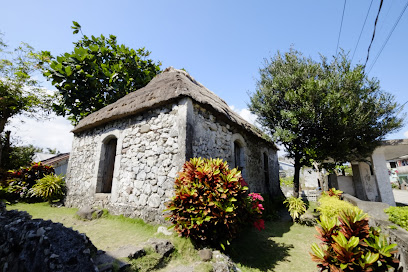
Sabtang Island Stone Houses
Uncover the cultural richness of Sabtang Island's stone houses, a remarkable tourist attraction in Batanes that showcases unique architecture and stunning landscapes.

Honesty Coffee Shop
Discover the unique dining experience at Honesty Coffee Shop in Batanes, where trust meets taste in a picturesque setting.

San Carlos Borromeo Parish Church - Panatayan, Mahatao, Batanes (Prelature of Batanes)
Discover the beauty and history of San Carlos Borromeo Parish Church in Mahatao, Batanes—a serene blend of spirituality and stunning architecture.
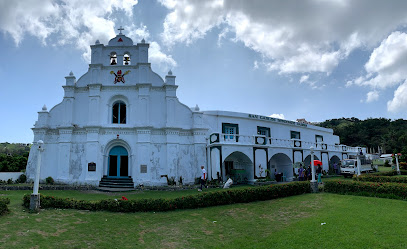
RedDoorz @ Pension Ivatan Batanes
Discover tranquility at RedDoorz @ Pension Ivatan Batanes, a perfect retreat in Basco combining local charm and modern comfort amidst breathtaking landscapes.

Batanes Provincial Capitol
Explore the architectural beauty and cultural significance of the Batanes Provincial Capitol in Basco, Batanes - a must-visit for every traveler.

Chamantad-Tiñan Viewpoint
Experience the stunning vistas and cultural richness at the Chamantad-Tiñan Viewpoint in Batanes, where every moment is a postcard-worthy memory.

Tukon Chapel
Discover Tukon Chapel in Batanes, a serene Catholic church offering stunning views and a peaceful atmosphere, perfect for reflection and appreciation of nature.

Dipnaysuhuan Japanese Tunnel
Discover the historical significance of Dipnaysuhuan Japanese Tunnel, a WWII relic in Batanes that offers a unique glimpse into the past.

Casa Napoli Pizza
Experience authentic Italian pizza in the heart of Basco, Batanes, where fresh ingredients meet breathtaking island views.

Unmissable attractions to see
Basco Rolling Hills
Experience the breathtaking landscapes and serene beauty of Basco Rolling Hills, a must-visit destination in Batanes, Philippines, for nature lovers.

Chawa View Deck
Discover the breathtaking views at Chawa View Deck in Mahatao, Batanes, where the cliffs meet the sea in stunning harmony.

House of Dakay
Discover the House of Dakay in Ivana, Batanes – a stunning blend of history, culture, and traditional Ivatan architecture in the Philippines.

Sabtang Island Stone Houses
Explore the enchanting stone houses of Sabtang Island, where rich culture meets breathtaking landscapes in the heart of Batanes.

San Carlos Borromeo Parish Church - Panatayan, Mahatao, Batanes (Prelature of Batanes)
Discover the rich spiritual heritage and stunning architecture of San Carlos Borromeo Parish Church in Mahatao, Batanes, a must-visit historical landmark.

Chamantad-Tiñan Viewpoint
Discover the stunning vistas of Chamantad-Tiñan Viewpoint in Batanes, where nature's beauty meets tranquility in the Philippines.

Tukon Chapel
Discover Tukon Chapel in Batanes, a serene Catholic church offering breathtaking views and a tranquil atmosphere for reflection.

Tayid Lighthouse
Experience breathtaking views and rich maritime history at Tayid Lighthouse, a stunning attraction in the beautiful Batanes region of the Philippines.

Rakuh A Payaman (Marlboro Country)
Discover the breathtaking landscapes of Rakuh A Payaman, a serene escape in Batanes known for its stunning views and tranquil atmosphere.

San Jose el Obrero Church
Discover the architectural beauty and spiritual heritage of San Jose el Obrero Church in Ivana, Batanes - a must-visit destination for travelers.

Rakuh-a-idi Spring
Experience the serene beauty of Rakuh-a-idi Spring in Mahatao, Batanes, a perfect escape for nature lovers and cultural enthusiasts alike.

Kilometer Zero (Batan Island)
Experience the breathtaking beauty of Batan Island starting from Kilometer Zero, the gateway to adventure and cultural exploration in Batanes.

Rapang Cliff Philippines
Experience breathtaking views and serene landscapes at Rapang Cliff, a stunning natural wonder in Itbayat, Batanes, Philippines.

Morong Beach
Explore the unspoiled paradise of Morong Beach in Sabtang, Batanes - a serene escape with stunning views and rich cultural experiences.

Torongan Cliff Philippines
Discover the stunning vistas and tranquil beauty of Torongan Cliff, a breathtaking viewpoint in Itbayat, Batanes, perfect for nature lovers and adventurers.

Essential places to dine
Honesty Coffee Shop
Discover the unique charm and flavors at Honesty Coffee Shop in Ivana, Batanes - where trust and taste blend beautifully.

Batanes Octagon Bed and Dine
Experience authentic Ivatan cuisine at Batanes Octagon Bed and Dine – where local flavors meet cozy hospitality in beautiful Basco.
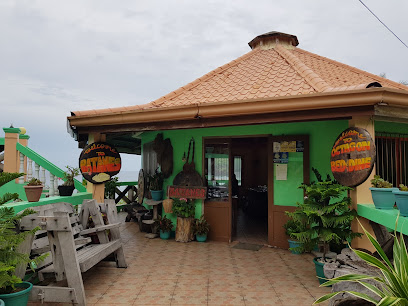
Beehan Meals & Snacks
Discover authentic Batanese cuisine at Beehan Meals & Snacks in Basco—where every dish tells a story!

Casa Napoli Pizza
Experience the authentic taste of Italy at Casa Napoli Pizza in Basco, where every bite transports you to culinary paradise.

Harbour Cafe
Discover authentic Ivatan flavors at Harbour Cafe in Basco, Batanes – where breathtaking views meet delightful cuisine.

Jino's East Pizzaria
Experience delicious pizzas and local specialties at Jino's East Pizzaria in Basco, Batanes - where every bite tells a story.

Cafe du Tukon
Experience authentic Ivatan cuisine at Cafe du Tukon amidst breathtaking landscapes in beautiful Batanes.

Shanedel's Inn & cafe
Discover Shanedel's Inn & Cafe in Basco, where local flavors meet breathtaking views in a cozy setting perfect for travelers.

Wakaii Catering Services
Discover authentic Ivatan flavors at Wakaii Catering Services in beautiful Sabtang, Batanes – a must-visit culinary destination for tourists.

Hudzan's Cafe
Discover authentic Batanese flavors at Hudzan's Cafe in Basco – where every meal tells a story.

Noods
Experience authentic Filipino cuisine at Noods in Basco, Batanes – where every dish tells a story.

da Figura Cafe
Experience authentic Ivatan cuisine at da Figura Cafe in Sabtang - where local flavors meet breathtaking views.

Cafe Pampayukay
Experience the flavors of Batanes at Cafe Pampayukay – where local cuisine meets exceptional coffee in a cozy atmosphere.

Bunkers Bistro
Discover culinary delights at Bunkers Bistro in Basco - where local flavors meet breathtaking views.

Allegro Cafe
Discover authentic Ivatan cuisine at Allegro Cafe in Basco, where every dish tells a story and every bite delights.

Markets, malls and hidden boutiques
Tolledo's Souvenir Shop
Explore the essence of Batanes with unique crafts and souvenirs at Tolledo's Souvenir Shop in Basco, a must-visit for every traveler.

Kaydian Souvenir Shop
Explore Kaydian Souvenir Shop in Ivana, Batanes for authentic local crafts and unique gifts reflecting the rich culture of the region.
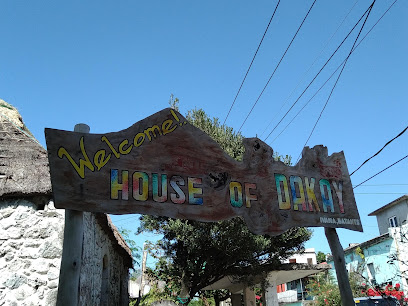
JVN'S CANTEEN & VARIETY STORE
Discover the authentic flavors of Batanes at JVN's Canteen & Variety Store, where local cuisine meets a charming variety shop experience.

Vahan Rock Store
Experience the essence of Batanes at Vahan Rock Store, where local crafts and culture come together amid stunning landscapes.

Batanes B.A.B. Minimart
Batanes B.A.B. Minimart in Basco: Your go-to convenience store for snacks, drinks, and local products while exploring the stunning Batanes islands.

CIELO GENERAL MERCHANDISE
Discover the best of local goods and essentials at Cielo General Merchandise in Basco, Batanes – where convenience meets culture.
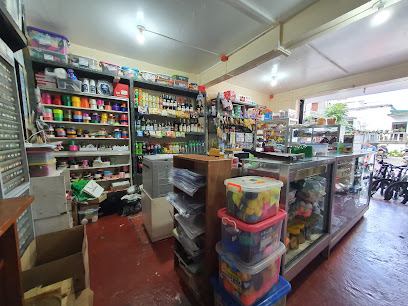
BERMUDEZ General Merchandise
Discover the flavors of Batanes at Bermudez General Merchandise, your local grocery store for authentic treats and fresh produce.

Shop N Save Trading
Explore the local flavors and essentials at Shop N Save Trading, Basco's go-to grocery store for travelers and locals.

Arthestic Palette
Discover your creative spirit at Arthestic Palette, the premier art supply store in Basco, Batanes, where local artistry meets vibrant supplies.

Pantone Space
Explore Pantone Space in Basco, Batanes – A haven for artists with an extensive selection of quality art supplies and a vibrant creative community.

Depanneur
Explore Depanneur in Mahatao for all your convenience needs and a taste of local Batanes hospitality.

Triple A General Merchandise
Discover the best mobile phones and accessories at Triple A General Merchandise in Basco, Batanes – your essential tech stop while exploring the islands.

Kurchu
Explore Kurchu in Basco, Batanes for a unique selection of footwear that blends comfort and style, perfect for your island adventures.

Photos merchandise
Discover the essence of Batanes at Photos Merchandise, your go-to convenience store for unique local souvenirs and essential goods.

TCNaldo's Trading
Explore the local tastes of Batanes at TCNaldo's Trading, where fresh produce and unique local products await every traveler.

Essential bars & hidden hideouts
Honesty Coffee Shop
Experience the unique honesty concept at Honesty Coffee Shop in Ivana, Batanes, where trust and delicious coffee blend in a cozy atmosphere.
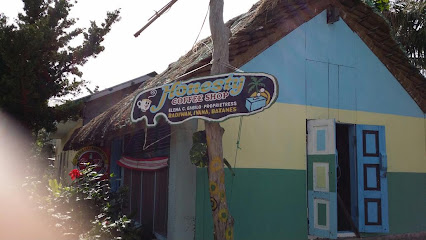
Batanes Octagon Bed and Dine
Discover Batanes Octagon Bed and Dine: A culinary gem offering authentic Ivatan cuisine and stunning views in the heart of Batanes.

Beehan Meals & Snacks
Savor the authentic flavors of Batanes at Beehan Meals & Snacks, a culinary gem in Basco offering local dishes in a welcoming atmosphere.

Casa Napoli Pizza
Discover the authentic taste of Italy at Casa Napoli Pizza in Basco, Batanes, where every bite is a delightful experience.

Harbour Cafe
Discover the culinary delights of Batanes at Harbour Cafe, where fresh local cuisine meets stunning coastal views in a charming outdoor setting.

Jino's East Pizzaria
Savor the taste of Batanes at Jino's East Pizzaria, where artisanal pizzas meet local ingredients in a cozy setting.

Cafe du Tukon
Discover the flavors of Batanes at Café du Tukon, a scenic restaurant offering local dishes and breathtaking views in the heart of nature.

Dive Batanes Lodge & Restaurant
Discover the beauty of Batanes at Dive Batanes Lodge & Restaurant, where comfort meets adventure in a stunning island paradise.

Shanedel's Inn & cafe
Shanedel's Inn & Cafe: A cozy dining experience with stunning sunset views and delightful local cuisine in the heart of Basco.

Noods
Experience the authentic flavors of Batanes at Noods, a charming restaurant in Basco known for its delicious dishes and warm atmosphere.

da Figura Cafe
Experience the flavors of Batanes at da Figura Cafe, a charming restaurant in Sabtang with stunning views and local delicacies.
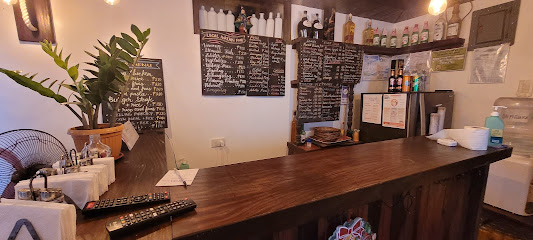
SIDEWALK RESTO-BAR
Discover the vibrant nightlife of Basco at Sidewalk Resto-Bar, where local flavors and a lively atmosphere come together in perfect harmony.

Bunkers Bistro
Discover the charm of Bunkers Bistro in Basco, Batanes, where local flavors meet breathtaking views for an unforgettable dining experience.

WO-WA Snack Bar
Experience the authentic tastes of Batanes at WO-WA Snack Bar, where local flavors and warm hospitality await every visitor.

Sivahan Blue Deck
Discover the flavors of Batanes at Sivahan Blue Deck, where local cuisine meets breathtaking views in a serene setting.
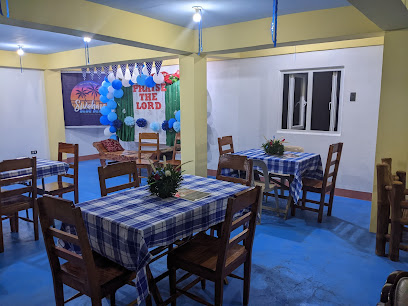
Local Phrases
-
- HelloKamusta
[ka-mus-ta] - GoodbyePaalam
[pa-a-lam] - YesOo
[o-o] - NoHindi
[hin-di] - Please/You're welcomeMangyari
[man-gya-ri] - Thank youSalamat
[sa-la-mat] - Excuse me/SorryPaumanhin
[pau-man-hin] - How are you?Kamusta ka?
[ka-mus-ta ka] - Fine. And you?Mabuti. Ikaw?
[ma-boo-ti. i-kaw] - Do you speak English?Marunong ka mag-Ingles?
[ma-ru-nong ka mag-ing-gles] - I don't understandHindi ko maintindihan
[hin-di ko main-tin-di-han]
- HelloKamusta
-
- I'd like to see the menu, pleaseGusto ko makita ang menu, pakiusap
[gus-to ko ma-ki-ta ang me-nu, pa-ki-u-sap] - I don't eat meatHindi ako kumakain ng karne
[hin-di a-ko ku-ma-ka-in ng kar-ne] - Cheers!Mabuhay!
[ma-bu-hay] - I would like to pay, pleaseGusto ko magbayad, pakiusap
[gus-to ko mag-ba-ya-d, pa-ki-u-sap]
- I'd like to see the menu, pleaseGusto ko makita ang menu, pakiusap
-
- Help!Tulong!
[tu-long] - Go away!Lumayas ka!
[lu-ma-yas ka] - Call the Police!Tumawag sa Pulis!
[tu-ma-wag sa pu-lis] - Call a doctor!Tumawag ng doktor!
[tu-ma-wag ng dok-tor] - I'm lostNawawala ako
[na-wa-wa-la a-ko] - I'm illMay sakit ako
[may sa-kit a-ko]
- Help!Tulong!
-
- I'd like to buy...Gusto ko bumili ng...
[gus-to ko bu-mi-li ng] - I'm just lookingNagmamasid lang ako
[nag-ma-ma-sid lang a-ko] - How much is it?Magkano ito?
[mag-ka-no i-to] - That's too expensiveMasyadong mahal 'yan
[ma-sya-dong ma-hal yan] - Can you lower the price?Pwedeng babaan mo ang presyo?
[pwe-deng ba-ba-an mo ang pre-syo]
- I'd like to buy...Gusto ko bumili ng...
-
- What time is it?Anong oras na?
[a-nong o-ras na] - It's one o'clockAlas-uno na
[a-las-u-no na] - Half past (10)Ala-una y medya
[a-la-u-na y med-ya] - MorningUmaga
[u-ma-ga] - AfternoonHapon
[ha-pon] - EveningGabi
[ga-bi] - YesterdayKahapon
[ka-ha-pon] - TodayNgayon
[nga-yon] - TomorrowBukas
[bu-kas] - 1Isa
[i-sa] - 2Dalawa
[da-la-wa] - 3Tatlo
[tat-lo] - 4Apat
[a-pat] - 5Lima
[li-ma] - 6Anim
[a-nim] - 7Pito
[pi-to] - 8Walo
[wa-lo] - 9Siyam
[si-yam] - 10Sampu
[sam-pu]
- What time is it?Anong oras na?
-
- Where's a/the...?Nasaan ang...?
[na-sa-an ang] - What's the address?Ano ang address?
[a-no ang ad-dres] - Can you show me (on the map)?Pwede mo ba akong ipakita (sa mapa)?
[pwe-de mo ba a-kong i-pa-ki-ta sa ma-pa] - When's the next (bus)?Kailan ang susunod na (bus)?
[ka-i-lan ang su-su-nod na bus] - A ticket (to ....)Isang tiket (papuntang ...)
[i-sang ti-ket pa-pun-tang]
- Where's a/the...?Nasaan ang...?
History of Batanes
-
The Ivatan people, the indigenous inhabitants of Batanes, have lived on these islands for over 4,000 years. They developed a unique culture and society, characterized by their stone houses, vakul headgear, and traditional farming and fishing practices. The Ivatan's resilience is reflected in their ability to thrive in a landscape often battered by typhoons and strong winds.
-
In 1782, the Spanish colonial government formally annexed Batanes. The Spanish influence brought Christianity to the islands, with churches like San Jose de Ivana and San Carlos Borromeo becoming central to Ivatan life. The Spanish also introduced new agricultural techniques and crops, such as corn and tobacco, which complemented the Ivatan's existing farming practices.
-
Following the Spanish-American War, Batanes became part of the United States' Philippine territory in 1901. The American period saw the introduction of public education and modern infrastructure. The Ivatans began to experience a degree of modernization, with the construction of schools, roads, and health facilities. This period also marked the beginning of increased interaction between the Ivatans and the rest of the Philippines.
-
Batanes was occupied by Japanese forces during World War II, significantly impacting the local population. The islands saw skirmishes between Japanese and American forces, and the Ivatans suffered from food shortages and forced labor. However, the resilience and adaptability of the Ivatan people helped them endure these hardships.
-
After World War II, Batanes began a slow process of recovery and modernization. The Philippine government invested in rebuilding infrastructure and promoting tourism. The establishment of Batanes as a protected landscape and seascape in 1994 helped preserve its unique cultural and natural heritage. Modernization efforts have been balanced with a strong emphasis on maintaining the traditional Ivatan way of life.
-
Today, Batanes is known for its efforts to preserve the Ivatan culture. Traditional stone houses, local festivals such as the Vakul-Kanayi Festival, and the Ivatan language are actively maintained and promoted. The Ivatans continue to practice sustainable agriculture and fishing, ensuring that their culture remains vibrant and resilient in the face of modern challenges.
Batanes Essentials
-
Batanes is located in the northernmost part of the Philippines. The primary gateway is Basco Airport (BSO) in the capital town of Basco. Direct flights are available from Manila (Ninoy Aquino International Airport) and Clark (Clark International Airport). It is advisable to book flights in advance, especially during peak seasons, as seats can fill up quickly.
-
Transportation within Batanes is limited but adequate for tourists. Tricycles and jeepneys are the common modes of transport around the islands. For a more personalized experience, you can rent a bicycle or a motorbike. Guided tours are also available and are a great way to explore the islands' scenic landscapes and historical sites.
-
The official currency in Batanes is the Philippine Peso (PHP). While some hotels and larger establishments accept credit cards, it is advisable to carry cash, especially for transactions in smaller shops and local markets. ATMs are available but limited, so ensure you have enough cash before heading to more remote areas.
-
Batanes is known for being one of the safest places in the Philippines. Crime rates are very low, and locals are friendly and trustworthy. However, standard travel precautions should always be taken: keep an eye on personal belongings, avoid isolated areas at night, and be cautious of your surroundings.
-
In case of an emergency, dial 911 for immediate assistance. Basco General Hospital is the main medical facility in Batanes, located in Basco. It is advisable to have travel insurance that covers medical emergencies. For minor health issues, there are pharmacies in Basco where you can purchase over-the-counter medications.
-
Fashion: Do wear comfortable and modest clothing, especially when visiting churches and traditional villages. Avoid overly revealing attire. Religion: Do respect local customs and traditions. Always ask for permission before taking photos in places of worship. Public Transport: Do be polite and patient when using public transport. Don't expect strict schedules as services may be infrequent. Greetings: Do greet locals with a smile or a simple 'hello.' A slight bow of the head is also a sign of respect. Eating & Drinking: Do try the local Ivatan dishes and accept food offerings graciously. Don't refuse hospitality, as it is considered impolite.
-
To experience Batanes like a local, visit the traditional Ivatan stone houses and interact with the friendly residents. Attend local festivals such as the Vakul-Kanayi Festival to immerse yourself in the culture. For a unique experience, hike to the top of Mt. Iraya for a panoramic view of the islands. Renting a bike and exploring the scenic coastal roads is also highly recommended.
Trending Landmark in Batanes
-
Basco Lighthouse
-
Basco Rolling Hills
-
Fundacion Pacita
-
Chawa View Deck
-
Valugan Boulder Beach
-
House of Dakay
-
Sabtang Island Stone Houses
-
Honesty Coffee Shop
-
San Carlos Borromeo Parish Church - Panatayan, Mahatao, Batanes (Prelature of Batanes)
-
RedDoorz @ Pension Ivatan Batanes
-
Batanes Provincial Capitol
-
Chamantad-Tiñan Viewpoint
-
Tukon Chapel
-
Dipnaysuhuan Japanese Tunnel
-
Casa Napoli Pizza
Nearby Cities to Batanes
-
Things To Do in Ilocos Norte
-
Things To Do in Vigan
-
Things To Do in Sagada
-
Things To Do in Baguio
-
Things To Do in Angeles City
-
Things To Do in Subic
-
Things To Do in Manila
-
Things To Do in Tagaytay
-
Things To Do in Legazpi
-
Things To Do in Okinawa
-
Things To Do in Boracay
-
Things To Do in Cebu City
-
Things To Do in Bohol
-
Things To Do in Puerto Princesa
-
Things To Do in Siargao













